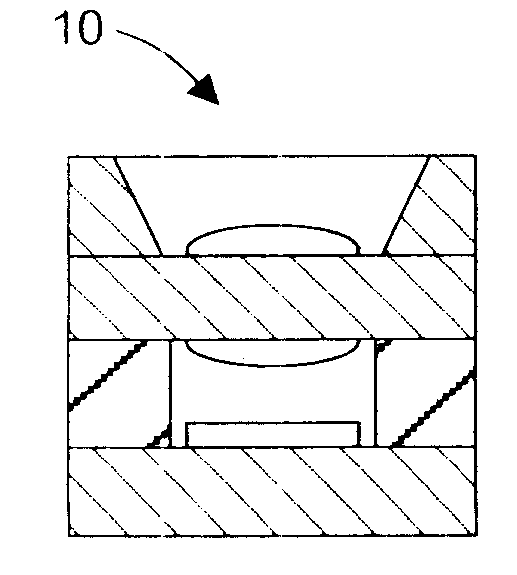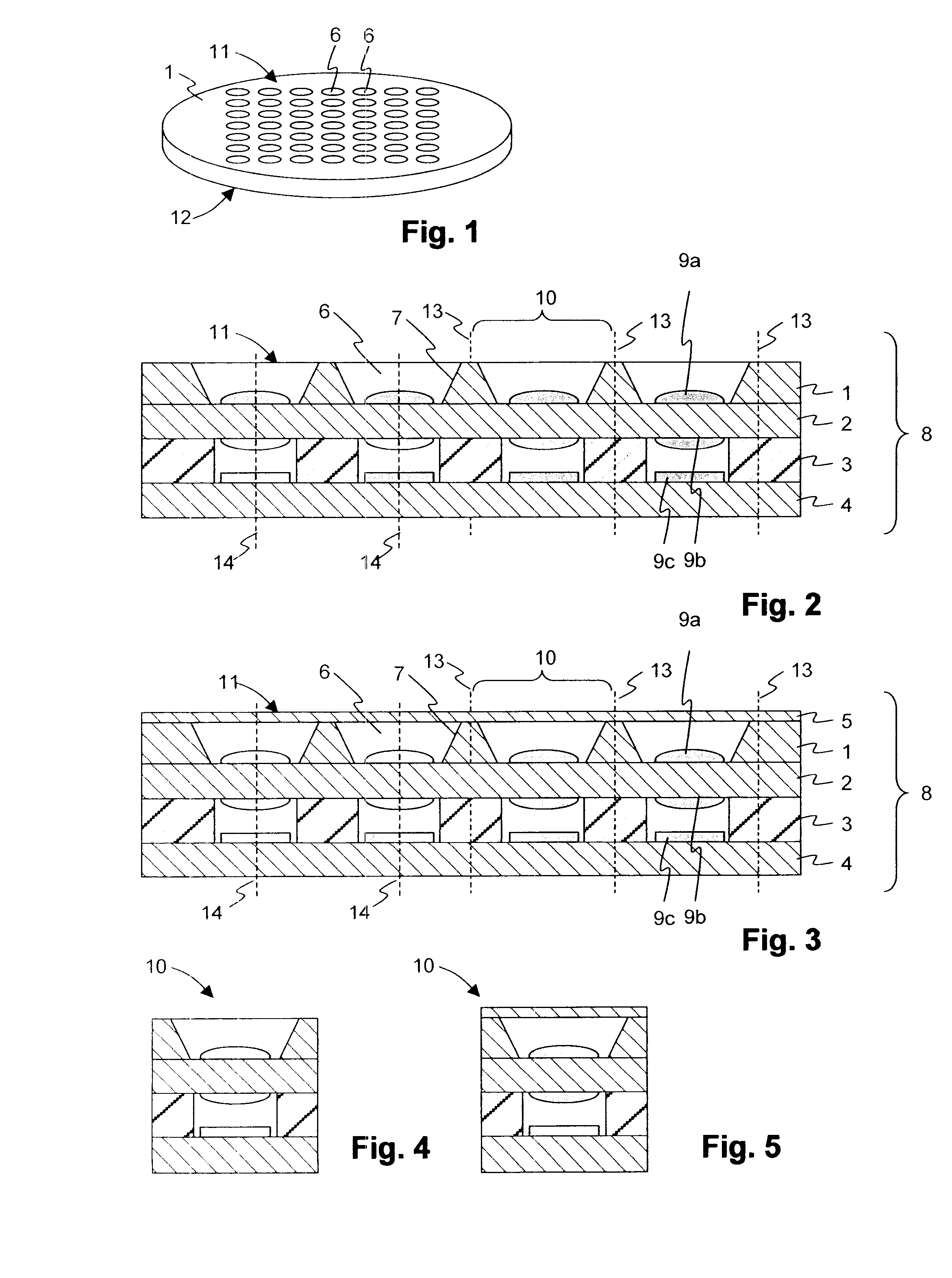Wafer stack, integrated optical device and method for fabricating the same
a technology of optical devices and wafers, applied in the field of integrated optical devices, can solve the problems of reduced image quality, known modules and manufacturing processes, artifacts in images, etc., and achieve the effect of low cos
- Summary
- Abstract
- Description
- Claims
- Application Information
AI Technical Summary
Benefits of technology
Problems solved by technology
Method used
Image
Examples
Embodiment Construction
[0034]FIG. 1 schematically shows an elevated view of a sunshade plate. The sunshade plate 1 is wafer-sized and comprises a plurality of through holes 6, typically arranged in a grid or array. The through holes 6 extend from a top surface 11 to a bottom surface 12 of the sunshade plate 1 and preferably are conical in shape.
[0035]FIGS. 2 and 3 show lateral cut-away views of wafer stacks 8 with a sunshade plate 1. A wafer stack 8 comprises, from top to bottom, a sunshade plate 1 stacked on a top wafer 2 carrying functional elements, for example, a first lens 9a and second lens 9b. Alternatively, the top wafer 2 may carry only lenses on its top or only on its bottom surface. The lenses may be fabricated on the top wafer 2 by means of a replication process, or may be shaped into the top wafer 2 itself. The top wafer 2 is stacked on a further wafer 4 from which it may be separated by a spacer wafer 3. The further wafer 4 carries, as further functional elements, imaging or camera chips 9c....
PUM
| Property | Measurement | Unit |
|---|---|---|
| angle | aaaaa | aaaaa |
| thickness | aaaaa | aaaaa |
| diameter | aaaaa | aaaaa |
Abstract
Description
Claims
Application Information
 Login to View More
Login to View More - R&D
- Intellectual Property
- Life Sciences
- Materials
- Tech Scout
- Unparalleled Data Quality
- Higher Quality Content
- 60% Fewer Hallucinations
Browse by: Latest US Patents, China's latest patents, Technical Efficacy Thesaurus, Application Domain, Technology Topic, Popular Technical Reports.
© 2025 PatSnap. All rights reserved.Legal|Privacy policy|Modern Slavery Act Transparency Statement|Sitemap|About US| Contact US: help@patsnap.com


